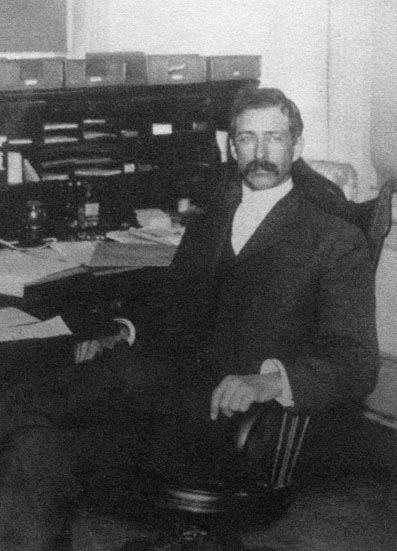Frederick Vernon Coville
Frederick Coville (1867-1937) studied botany at Cornell University. He graduated in 1887 and took a job with the Department of Agriculture in Washington. He also became a member of the Cosmos Club, a social club that attracted some of the brightest scientists in the city. Merriam was a member, and a friend of Coville’s as well. This, and that fact that Coville had done extensive fieldwork in places such as Death Valley, secured him a berth on the Harriman Expedition.
At 32, he was one of the younger men on board. He took advantage of every opportunity to hike, camp, and explore Alaska’s coast. He stayed for three days on Columbia Glacier with Palache and Gilbert. He also spent a good deal of time talking with the more seasoned scientists, particularly Fernow. As with many “progressive” nineteenth century scientists, he sided with those who would use, rather than preserve, wilderness, and noted that Alaska’s “enormous growth of grass” was “going to waste every year.”
After the trip, he returned to Washington, D.C. and to botany, and eventually directed the National Arboretum. He died in 1937. [PBS.com, Harriman Expedition Retraced]
Bibliography (Partial)
- Coville, F. V. 1897. The August vegetation of Mount Mazama, Oregon. Mazama1(2):170-203.
- Coville, Frederick V. Josephine Adelaide Clark, Botany of the Death Valley expedition. Report on the botany of the expedition sent out in 1891 by the U.S. Department of agriculture to make a biological survey of the region of Death Valley, California. Washington, Govt. Print. Off., 1893.
- Frederick Vernon Coville, Forest Growth and Sheep Grazing in the Cascade Mountains of Oregon, 1898, Govt. Print. Off.
- Frederick Coville and Daniel T. Macdougal, Desert Botanical Laboratory of the Carnegie Institution, Nov., 1903., Carnegie Institution.
 |
|
Frederick V. Coville, Courtesy Crater Lake National Park Museum and Archives Collection. |
***previous*** — ***next***

